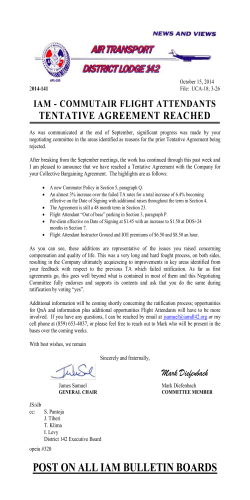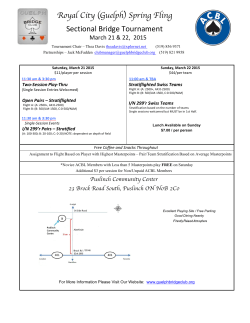
Kein Folientitel
Fly or die? The influence of sub-chronic exposure to different pesticides on the flight performance in honeybees Verena Strobl, Ulrike Riessberger-Gallé, Javier Hernández-López, Wolfgang Schuehly, Karl Crailsheim Department of Zoology, Karl-Franzens-University Graz, Universitätsplatz 2, 8010 Graz, Austria E-Mail: [email protected] Background Negative effects of pesticides on orientation and memory of honeybees are univocally proven [1,2], whilst the influence on the flight performance from the physiological point of view is less explored so far. In the following, we used three pesticides, from different chemical classes (cypermethrin, dimethoate and imidacloprid) to investigate their effects on honeybees flight performance. Each pesticide was tested at two concentrations: published LD50-values [3] and sub-lethal concentrations of one-fifth. Additional, we combined all pesticides in both concentrations. Materials and Methods Experiments were carried out with hive bees as well as caged bees. At an age of 14-17 days (Fig.1) they received 50% sucrose solution for 48 h, containing the following concentrations of pesticides (mg/L): cypermethrin (1 and 0,2), dimethoate (6 and 1,2) or imidacloprid (0,2 and 0,04) as well as combinations of the three. At the age of 17-20 days the bees were stimulated to fly in a roundabout (Fig.2) until all their energy reserves in the honey sac were used up. After this “emptying flight” all bees were fed 10 µL of 2 M sucrose solution and stimulated to fly again to measure flight duration, covered distance and speed of each flight. Fig.1. Schematic representation of the testing procedure Fig.2. Flying honeybee, attached to the rotator arm in the roundabout. Picture: Friedrich Simon Kugi Results and Discussion Bees did not survive neither exposure to a concentration of 6 mg/L dimethoate (LD50) nor to LD50 combination, so there are no flight data for these two groups. In the other groups the surviving rate was > 95%. For all tested flight parameters, flight duration (Fig. 3a), covered distance (Fig. 3b), maximum speed (p=0,260) and average speed (p=0,268), we could not find either a significant impairment among the pesticide-treated groups nor in comparison of the pesticide-treated groups with the control group. a Our results indicate that none of the investigated flight parameters was significantly negatively affected by a pesticide exposure prior to the flight experiments. Parallel to this finding, in our previous experiments [4] using heat-killed bacteria to evoke an immune response, we could demonstrate that also the costs accompanying such an immune challenge did not negatively influence a forager’s flight performance. On the other hand an immune challenge induced by a non-pathogenic immunogenic elicitor lipopolysaccharide [5], or by agricultural chemicals [2] reduces learning and memory in honeybees. b We conjecture that proper flight performance is a basic and vital prerequisite of forager bees that is more robust against external stressors than e.g., orientation behavior and memory function. Literature [1] Fischer J, Müller T, Spatz A-K, Greggers U, Grünewald B. (2014) Neonicotinoids interfere with specific components of navigation in honeybees. Plos one 9(3): e91364. [2] Decourtye A, Devillers J, Genecque E, Le Menach K, Budzinski H, Cluzeau S, Pham-Delègue M. H. (2005) Comparative sublethal toxicity of nine pesticides on olfactory learning performances of the honeybee Apis mellifera. Arch. Environ. Contam. Toxicol. 48, 242250 [3] http:/ /bienen.jki.bund.de/dokumente/upload/bedbd_57_dpst_berlin_2010_poster_200_bu_bischoff.pdf (Julius-Kühn_Institut) [4] Riessberger-Gallé U, Hernández-López J, Schuehly W, Crockett S, Craislheim K. (2014) Immune responses of honeybees and their fitness costs as compared to bumblebees. Apidologie DOI: 10.1007/s13592-014-0318-x [5] Mallon, E.B., Brockmann, A. & Schmid-Hempel, P. (2003) Immune response inhibits associative learning in insects. Proceedings of The Royal Society B 270, 2471–2473. Acknowledgments Funding for this project comes from the Project „Zukunft Biene“ of the Austrian Life Ministery (Lebensministerium) www.zukunft-biene.at Fig.3. Flight performance of tested honeybees after exposure to given concentrations of pesticides. a shows flight duration in minutes (p=0,618) and b shows covered distance in meters (p=0,233). Results consist of means from 15 to 20 individuals.
© Copyright 2025









